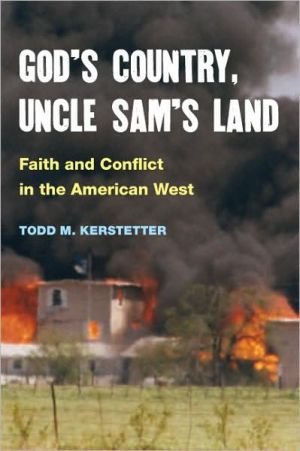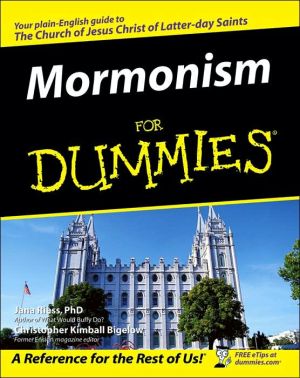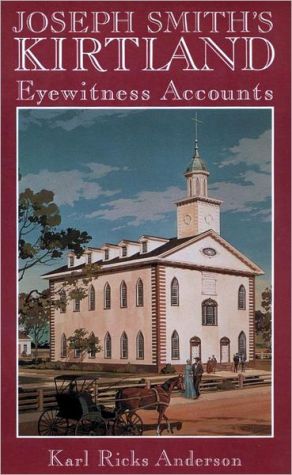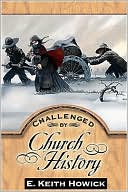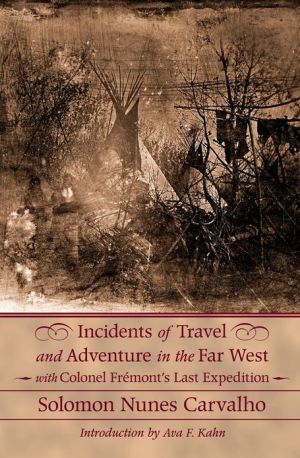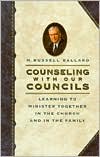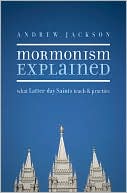God's Country, Uncle Sam's Land: Faith and Conflict in the American West
While many studies of religion in the West have focused on the region's diversity, freedom, and individualism, Todd M. Kerstetter brings together the three most glaring exceptions to those rules to explore the boundaries of tolerance as enforced by society and the U.S. government. In sharp contrast to the mythic image of the West as the "Land of the Free," Kerstetter analyzes three tragic episodes that reveal the West as a cultural battleground: the Mormon Utah Expedition and Mountain Meadows...
Search in google:
How and why three emerging religious groups failed to find a peaceful home in a purportedly tolerant region.
God's Country, Uncle Sam's Land\ FAITH AND CONFLICT IN THE AMERICAN WEST \ \ By Todd M. Kerstetter \ UNIVERSITY OF ILLINOIS PRESS\ Copyright © 2006 Board of Trustees of the University of Illinois\ All right reserved. \ ISBN: 0-252-03038-9 \ \ \ \ Chapter One\ God's Country \ This is God's country. He peopled it with red men, and planted it with wild grasses, and permitted the white man to gain a foothold; and as the wild grasses disappear when the white clover gains a footing, so the Indian disappears before the advances of the white man. -Bismarck (N.D.) Tribune, June 17, 1874\ There is no country in the world where the Christian religion retains a greater influence over the souls of men than in America. -Alexis de Tocqueville, Democracy in America\ THE PEOPLING OF NORTH AMERICA may have been an inherently religious venture. Judging by this chapter's epigraphs, Providence guided the process, perhaps with a purpose. Variations on the first remark appear in Native American creation stories that say the Creator placed certain people in certain places. Before trying to answer the questions asked at the end of the introduction, it would be worthwhile to test a broader canvas and ask whether religion made a difference in American history. It certainly did, but the details defy a simple interpretation.\ Patricia Nelson Limerick's four-word summary of the principal elements of the "New Western History," the four Cs of continuity, convergence, conquest, and complexity, provides useful guidance in tackling this question. Many of the themes found shaping the nation's earliest religious history continue to the present. The events in which religion made a difference resulted from the convergence of peoples, and when those events involved conflict, they frequently stemmed from some element of conquest, be it by European colonial powers or the United States after its creation and evolution into a colonizing power in its own right. Finally, as seems true for any discussion of religion, complexity dominates. Three themes present themselves in any survey of religion's role in American history. First, non-Indians generally attempted to force their religion on Indians as a part of conquest; whether or not the Indians accepted the proposition, the attempt sometimes bred Indian revitalization movements. Second, access to new space opened by conquest may have encouraged religious refugees or innovators fleeing the constrictions of mainstream society to try their new ideas or practice established ideas in an area they took to be free of persecution. Some of those passed quickly into obscurity, but others survived or even thrived. The final theme stems from the Catholic-Protestant split within Christianity, which periodically led the Protestant-dominated United States to suspect that Catholic loyalty to the pope would undermine republican institutions.\ Revitalization movements appeared several times over the centuries following European arrival in the portion of North America that would become the United States. English settlers had a spiritual agenda in their relations with Native Americans. Members of the Virginia Company, for example, tried to convert members of the Powhatan Confederacy. For more than a decade they eroded Powhatan culture. Finally, in 1620-21, the political leader Opechancanough allied with a prophet, military leader, and adviser, Nemattenew, to lead a revitalization movement. Nemattenew professed to be immortal and therefore invulnerable to English bullets. In addition, he claimed to have ointments and special powers that could make other Indians impervious to English attacks. Together the two Powhatans touched off the Second Anglo- Powhatan War in 1622; over the following twenty years of hostilities, the Powhatans struggled in vain to drive the English from Virginia.\ Like the English, Spaniards spread their brand of Christianity-Catholicism-as they expanded into the Americas. After heated criticism of the bloody conquests of native peoples in what is now Mexico, the Spanish crown sought to carry out further native subjugation in a more Christian and humane manner. This policy guided Spanish expansion into New Mexico by the late sixteenth century and early seventeenth century, with Franciscan missionaries working hand in glove with the Spanish military as both expanded their influence. Spanish missions included not only priests to proselytize the natives but also soldiers for protection from and coercion of those not convinced of the merits of Spanish or Catholic ways. Some Pueblo Indians, facing starvation or attack from neighboring tribes, professed Christian beliefs to secure Spanish protection but continued to practice their own religion covertly. For nearly a century Spanish Catholicism appeared to be gaining a foothold among the Pueblos.\ Starvation and the Spaniards' inability to protect them from raids by neighboring Athapaskans led to increasing discontent among the Pueblos during the 1660s and 1670s. When Spanish civil and clerical authorities undertook a policy of complete intolerance for Pueblo traditions, including bans on meetings in kivas and the destruction of underground ceremonial chambers, resentment among Pueblos pushed them to the breaking point. An influential medicine man, Pope, spread word that three key Pueblo deities had told him to revolt against Spanish rule and the Spanish god. After the revolt Pope would lead the return to Pueblo life as it existed before Spanish arrival. Pope played a leading role in organizing the Pueblo Revolt of 1680, which removed the Spaniards from Pueblo life for more than a decade.\ Less than a century later European encroachment into the Great Lakes region contributed to similar results. Among the Delawares lived a man who experienced visions directing him to lead his people back to the glorious days before European contact. Known among whites as the Delaware Prophet, he urged his followers to purify themselves, abstain from sex, give up using firearms, and return as nearly as possible to the way they lived before Europeans arrived. The Delaware Prophet told his followers that if they did these things and listened to subsequent divine revelations as he received and revealed them, they could drive the white people from the region. Pontiac, an Ottawa chief, harnessed the sentiment stirred by the Delaware Prophet to recruit supporters for a pan-Indian alliance he was organizing to expel British invaders from the Great Lakes area. The movement failed, however, and Indian revitalization movements and pan-Indian anti-European alliances faded for a generation or so.\ In the early nineteenth century American expansion contributed to new religious movements among indigenous peoples as the site of cultural collision moved west of the Appalachians. In the Ohio River valley Shawnees experienced cultural stresses and changes from contact with European Americans. Early in the nineteenth century the Shawnees saw their land base shrink and game supplies dwindle as American settlers, backed by the U.S. military, invaded Kentucky and the Northwest. In 1805 an alcoholic Shawnee named Lalawethika fell for several hours into a trancelike state, appearing dead to his relatives and neighbors. On waking Lalawethika told of dying and visiting the spirit world, where he glimpsed a paradise for his people. He changed his name to Tenskwatawa, meaning "Open Door," and became a religious leader among the Shawnees, advocating a resurgence of traditional values and mores. Tenskwatawa preached that to attain paradise, the Shawnees must not only abandon polygamy but also shun the whites' ways. They were to forsake alcohol; stop accumulating property; cast off American clothing; and for the most part cease using American technology, such as metal (guns could be used for self-defense, but the Shawnees were to kill game with stone-tipped spears and arrows). Ultimately, all intercourse between Shawnees and Americans would cease.\ Tenskwatawa left his village and led followers (including his older brother Tecumseh, who converted to his sibling's way after Tenskwatawa experienced additional visions) to found a village at Greenville, in western Ohio. Waves of religious converts descending on the new village soon outstripped its capacity to feed them. Hostile reactions by neighboring tribes and U.S. officials led Tecumseh and Tenskwatawa to accept an invitation from other Indians to relocate in what is now western Indiana. The Shawnees moved west with a number of converts to a spot near the confluence of the Tippecanoe and Wabash rivers, where they established Prophetstown.\ As Tenskwatawa spread word of his visions, Tecumseh talked to other receptive Indian nations of his plan for a pantribal military and political alliance to preserve Indian control of lands in the face of U.S. expansion. Tenskwatawa joined in the recruitment. While continuing to preach religious revitalization, he also told arrivals at Prophetstown that a political and military union would be necessary and advised them to begin hoarding arms and ammunition.\ As governor of Indiana, William Henry Harrison became concerned about the growing strength of this new Indian confederacy. He denounced Tenskwatawa's religious messages and urged potential converts to question the prophet's religious authority. In 1811 Harrison led a force including federal troops, Indiana militia, and Kentucky volunteers against the confederacy and claimed victory in the battle of Tippecanoe. Although a comparison of casualties suffered by each side suggests a draw, Tenskwatawa's inability to protect his followers from American bullets demolished his credibility as a prophet and ended his days as a religious leader.\ (Continues...)\ \ \ \ \ Excerpted from God's Country, Uncle Sam's Land by Todd M. Kerstetter Copyright © 2006 by Board of Trustees of the University of Illinois. Excerpted by permission.\ All rights reserved. No part of this excerpt may be reproduced or reprinted without permission in writing from the publisher.\ Excerpts are provided by Dial-A-Book Inc. solely for the personal use of visitors to this web site. \ \
Introduction : guns, God, and government in the west11God's country132Uncle Sam and the saints333Uncle Sam and the lying messiah814Uncle Sam and the sinful messiah1245Uncle Sam's land167
